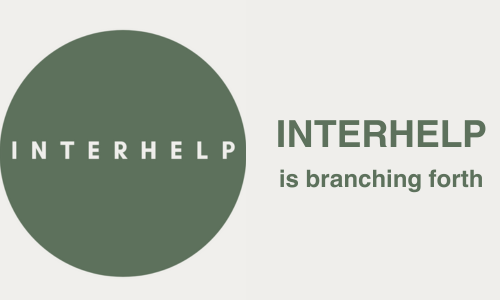Dear Interhelpers and friends,
As I write this, a flat of pansies sits outside my door, awaiting planting when the garden finally dries out enough. It’s so wet here. But nothing like in some other places: areas of Iran, Mozambique, the Midwest US. A couple of resources have helped me comprehend and think strategically about this moment in time (see below).
Are there resources you are finding particularly helpful right now? Let me know and I will list them in the next newsletter.
The Work That Reconnects continues to help people around the world grapple with these times and orient toward activism and service. Interhelp’s mission of supporting this work got a boost this winter when we welcomed new Council member Daniel Kieval. Daniel was a member of an early Earth Leadership Cohort, an immersion in the Work That Reconnects for young people. A new Earth Leadership Cohort will be forming soon, to be announced in this newsletter!
Interhelp’s 2019 Seed Funding – Micro-grant program is open for applications. Learn more here.
Events listed below include two this weekend, as well as a one-day workshop in Springfield, MA next month. If you know about upcoming WTR-related events, let me know.
This newsletter closes with a piece by Carol Harley, New Eyes, New Vision. I hope many more of you will submit writings inspired by your Work That Reconnects experiences!
Paula Hendrick
interhelpeditor@gmail.com
Resources
In the video Deep Adaptation, Prof. Jem Bendell and Toni Spencer, a poet and Work That Reconnects facilitator, share the stage. Recommended by Joanna Macy.
Systems thinker and mom Dr. Elizabeth Sawin (whom I met at an extended retreat with Joanna and Fran Macy 12 years ago) introduces The Power of Multi-Solving.

In the February issue of Deep Times, Aravinda Ananda writes about the importance of land acknowledgements in workshops and community gatherings. Written for facilitators but important for all white people in the US.
If you have been inspired by the story of the Elm Dance, you may want to read Midnight in Chernobyl: The Untold Story of the World’s Greatest Nuclear Disaster. It lives up to the cover blurb: “a triumph of investigative reporting, exquisite science writing and heart-pounding storytelling.” A riveting look at a system run amok and why; the author pays deep and personal attention to the human stories that unfold.
Upcoming Events
Boston area Community of Practice Get-Together
Friday, April 12, 6:30 in Cambridge, MA
Please reply to Rosalie Anders.
Open to anyone who’s done any kind of Work That Reconnects workshop.
Active Hope: Inspiration and Courage for Times of Turmoil and Opportunity
A day of The Work That Reconnects
Saturday, April 13, Middlebury, VT
Learn more here.
Community Practice Day
Showing Up: Building Skills for Responding
Sunday, April 14. This event is full.
Active Hope:
Finding Resilience and Creative Action in a Time of Global Crisis
Saturday, May 4, 10-4
Unitarian Universalist Society, Springfield, MA
Joining the Active Hope process of Joanna Macy with Zen practice, and led by Verne McArthur and Jin Haeng Kyle Wiswall. Learn more here.
Interhelp’s annual weekend workshop/Gathering
October 18-20, 2019
Woolman Hill, Deerfield, MA
Mark your calendars now!
New Eyes, New Vision
by Carol Harley

(Collage by my mother Barbara Harley, created in honor of my 40th birthday)
I recently turned 60, and immediately got in line for cataract surgery. My eyesight had become much worse in the past few years. It was time. And I was fortunate to be able to sign up for multifocal lens implants, which held the promise of 20/20 vision. To a girl who has worn eyeglasses since age twelve, the idea was thrilling. Several friends told me “colors will be brighter” sanscataracts (including Rosalie Anders of Interhelp). But …
… I was truly startled after the right eye’s veil was lifted. A few hours after surgery, I rested under a red fleece blanket. I peeked out around the eye shield’s edge. Suddenly I saw the solid brick-red fleece had acquired an odd “two-tone” effect. My new lens perceived it as more scarlet/pink compared to my left eye. Yes, the world was more vivid–and, quite a few colors had actually changed hue! I quickly discovered that greens were more yellow, blues more cerulean. The most dramatic were certain purples, which now looked less like gray-with-a-hint-of-purple and more like a fresh lilac bloom. For the next four weeks, I amused myself comparing hues. I winked and blinked until my left eye’s surgical date. Now both eyes are aligned, their different hue perception a mere memory.
We Don’t Know What We Don’t Know
It’s beyond our human ability to fully understand many concepts without personal experience. Now as I literally “see with new eyes” I’ve been prompted to reflect on the bigger picture.
First, I had been unaware of what I had lost. Last year I practically scoffed when people told me “colors will be brighter.” My intention in having the surgery was to address blurry vision and declining ability to focus. Colors were plenty bright, I thought. (Ha!)

When did the colors grow dim? Why didn’t I notice? Because the changes were small and incremental, over a period of years. We don’t know what we’re missing – just as we cannot see what exists in our blind spots until someone or something helps provide perspective.
As a kid playing in the woods, I didn’t notice the missing chestnut trees. I might never have known about the blight that robbed eastern North America of 3-4 billion castanea dentata if my father hadn’t told me. He missed them. A lot!
Blind Spots, Choices
Let’s be honest. In part due to white skin privilege I had the power to choose my new eyes. Thanks to Interhelp’s Growing Edges work, I’m now more aware of the systemic white-supremacy structures that enable such privilege. I’ve been studying what my formal education neglected to include. It is a profoundly painful set of discoveries, and I feel that this journey is just beginning. Like learning about Earth’s plummeting biodiversity and the rising likelihood of a U.S. nuclear catastrophe, it’s unsettling, uncomfortable and disorienting.
But I’m not alone. Just as I relied on the surgical team and administrative and logistical helpers when I surrendered to the eye surgeries, I am walking with reliable compadres on the path of awareness about injustices. And I am taking steps to (learn and) practice how to be more present and – hopefully – more skillful and useful at tending and mending the social web. These dance steps are worth learning!
